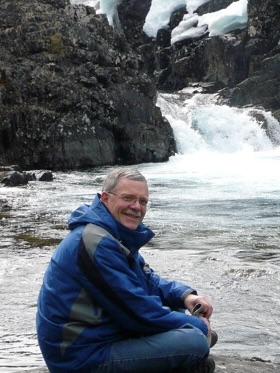Support strong Canadian climate journalism for 2025
Late January marked the fifth anniversary of the world's worst modern-day tailings dam disaster at an iron ore mine in Brumadinho, Brazil. The collapse killed at least 270 people. They were mostly Vale company employees eating lunch in a canteen directly below a dam that gave way, sending a tidal wave of 12 million cubic metres of toxic orange sludge eight kilometres downstream, bulldozing houses, offices and people.
Brumadinho remains a stark reminder that a modern mine is not just a source of valuable metals. It's also a permanent toxic waste storage facility. The need to store and manage mine tailings — the waste created by grinding up and processing ore — is modern mining’s greatest environmental liability and long-term expense. It’s also a huge concern moving forward, as production ramps up of critical metals like copper, needed for the electrification of our civilization to fight climate change. Many new, increasingly large, tailings dams will be required.
In the wake of Brumadinho — with B.C.'s Mount Polley tailings disaster in 2014 still fresh in memories — investors representing trillions in assets, led by the Church of England Pensions Board, vowed never again. Together, with the biggest mining industry group and the UN, the group set about creating a new system of rules to better manage the thousands of tailings dams scattered across the globe.
Then 2020 saw the launch of the Global Industry Standard for Tailings Management, a collection of best practices. As of this writing, about half of all public mining companies on Earth have either implemented or are committed to adopting the standard. The question now is: What will change on the ground in terms of community and environmental safety as a result?
“We’re safer, but we’re not as safe as we should be,” says David Chambers, a former mining geophysicist who leads the Montana-based Center for Science in Public Participation. He says 66 major tailings dams failed worldwide between 1995 and mid-2020, more than two every year. In 2019 alone, there were six. Last year, the year the standard appeared, there were zero — which makes him cautiously hopeful.
Mine tailings are now on the radar of mining companies like never before, which is a huge step forward, Chambers said. “Company directors and senior management can no longer ignore these tailings impoundments. They are having to pay attention to them, which was [historically] half the problem.”

Chambers was part of a group of NGOs that assembled after Brumadinho and attempted to fill the gaps left by the new global standard in a project called Safety First. He says a critical omission that remains is that so-called “upstream dams” — the cheapest to build and most accident-prone type of tailings dam design and the same kind that failed at Brumadinho and Fundão in Brazil four years earlier — have not been banned. (Mount Polley was a different design that had some elements of an upstream dam.)
Nor was a ban on the practice of dumping mining tailings into rivers and the ocean considered. That means companies like Freeport (operating at Grasberg in Indonesia), Barrick Gold (at the Porgera mine), Newmont at Lihir and a new proposed open pit mine in Papua New Guinea will continue dumping huge amounts of tailings into the environment.
Aidan Davy, co-chief operating officer with the International Council on Mining and Metals (ICMM), the association of 29 of the biggest mining companies and the primary force behind the content of the new standard, told me a “blanket ban” on upstream dams was not considered because this type of dam design is safe if it is done right. “A well-designed, well-planned, well-operated and maintained upstream facility in most parts of the world, you can do that safely. So, do you want to prohibit large numbers of operators in many parts of the world where these things can be operated safely for the long term from having access to this technology?”
Davy did not provide specific examples of what has changed on the ground for companies adopting the new rules. He said 24 companies in the ICMM committed to conforming to the standard by August 2023 for tailings dams considered at “extreme” and “very high” consequence in the event of a failure — about 240 sites in all. He acknowledged this deadline was not met by all of the companies.
Deanna Kemp, a professor at the University of Queensland’s Sustainable Minerals Institute and one of the expert panellists who wrote the standard, co-authored a book called Credibility Crisis that explains how the mining industry ultimately took control of the creation of the new standard. She says it’s important to understand that despite much fanfare, these new rules are voluntary and there is no mechanism to force compliance beyond community activism and the investor pressure the Church of England Pensions Board promises to unleash against laggard companies. “This isn’t regulation. This is voluntary. Many [companies] have sought to comply with the standard to satisfy investors. That’s the aim here. It’s to attract investment and to safeguard reputation.”
Pressure from investors to do better is important, but companies that do not rely on shareholder funding or are not worried about public reputation lack the incentive to comply. As of this writing, at least 126 companies, including Chinese mining powerhouse Zijin Mining Group, Saudi Arabia’s state-owned mining company Ma’aden, and many smaller companies, have not committed to following these rules.
Another troubling gap is there is no coverage of between 10,000 and 30,000 orphaned and abandoned tailings dams across the globe. The new standard can only be applied to new or existing tailings facilities with an active operator. Davy says these abandoned, orphaned tailings sites are a problem that “we still don’t have our arms around.”
Inspired by the Mount Polley disaster, Safety First also called for company directors to bear direct responsibility for the consequences of tailings failures — above and beyond having a responsible engineer of record, often a contractor. (In the aftermath of Mount Polley, mine owner Imperial Metals won a court judgment for $100 million in damages from its contractor engineers, while the company executive was never directly penalized or fined.)
The state of best practices for tailings dams in Canada is complex because member companies of the Mining Association of Canada — the nation’s most powerful mining trade association — appear to be required to follow the association’s own rules governing tailings. Those rules are considered close to meeting the new standard but are not identical. Mount Polley owner Imperial Metals is not a listed member of the association, but reports on its website that Mount Polley “continues implementation of Towards Sustainable Mining (TSM), a program administered by the Mining Association of Canada.” Imperial Metals and the Mining Association of Canada did not respond to calls for this story.
In a January announcement timed to the fifth anniversary, the Church of England Pensions Board’s Adam Matthews discussed the pending launch of an “International Global Tailings Management Institute” to oversee tailings dam knowledge-sharing and presumably provide some sort of certification process for the companies that comply with the standard. Details were scant, but Mining Watch Canada researcher Jamie Kneen, who participated in Safety First, says in the wake of Brumadinho, opportunities were missed.
Kneen was hoping for the creation of an independent global body to govern tailings dams and have real teeth. “There was this idea of setting up an independent authority, like the International Civilian Aviation Authority that countries would sign up to and the body is the ultimate authority that is legally viable and powerful because countries agree to make it that way. Tailings dams really require the same level of supervision, he added.
In the years since Brumadinho, serious tailings disasters have continued to happen. In 2022, a disused tailings dam in Jagersfontein, South Africa, failed and unleashed a tidal wave of waste that demolished homes, killing one and injuring 40. That same year, a dam breach at a Tanzanian diamond mine flooded about five square kilometres with tailings.
The future promises to be only more daunting as companies expand production for a metals-intensive clean energy transition in a world of plummeting grades of ore, forcing miners to sift through ever-greater quantities of waste to get the valuable metals we need.
“What do you do with tailings?” asked Luke Fletcher, who leads the Australia Jubilee Research Centre in Sydney, when I asked about solutions to this wicked problem. “There are no good environmental solutions. There are just different versions of less bad.”






Comments